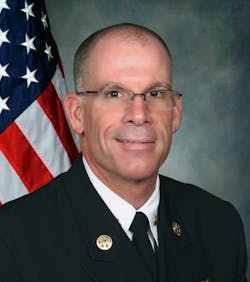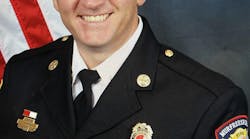As a student of the American fire service, I’m constantly seeking alternative channels and opportunities to expand my knowledge, learn new skills and stay current with events. Like most, I subscribe to my share of newsletters, magazines and related e-communications. Not surprisingly, I also spend my fair share of time surfing the Internet and social media channels, perusing the news of the day and capturing the creative energy (and sometimes disturbing activities) of the masses who post daily.
A few days ago, I came across a Facebook post with the statement, “Great message, must read to the end.” While hesitant at times about teasers like this, this particular post was shared by a well-known friend, so I proceeded to click on the link. The following summarizes the post:
How wide is home plate?
It was 1996 in Nashville, TN. More than 4,000 baseball coaches were meeting for their 52nd annual convention at the Opryland Hotel. The gathering represented professional, college, high school, youth and some international coaches who would be attending two and a half days of presentations/clinics and exhibits related to baseball and the latest information directed at enhancing the attendees’ skills and effectiveness as coaches.
The featured speaker of the day was Coach John Scolinos. Coach Scolinos was a salty 78 years old in 1996, and had been retired for five years from a college coaching career at Cal Poly Pomona that began in 1948.
With a capacity crowd in attendance, Coach Scolinos took the stage to an impressive standing ovation, wearing dark polyester pants, a light blue shirt and a string around his neck from which a home plate hung—a full-sized, stark-white home plate.
After speaking for 25 minutes without mentioning the purpose or rationale of his creative accessory, Coach Scolinos appeared to notice the snickering among some of the coaches to which he responded, “The reason I stand before you today is to share with you baseball people what I’ve learned in my life, what I’ve learned about home plate in my 78 years.”
Coach Scolinos proceeded to conduct a quick survey of those in attendance, beginning with the Little League coaches, “Do you know how wide home plate is in Little League?” After a pause, someone offered, “17 inches?” more question than answer.
The coach followed the hesitant response of the Little League coaches with the same question, now directed at the Babe Ruth League coaches, then the high school coaches. As expected, an obvious pattern began to appear: “17 inches.” He continues to ask the same question of the minor league coaches and then finally the pro-ball coaches. Without exception, the coaches unanimously agreed: The home plate at all levels in baseball measures exactly the same—17 inches.
“SEV-EN-TEEN INCHES!” he confirmed, his voice bellowing off the walls. “And what do they do with a Big League pitcher who can’t throw the ball over 17 inches?” Pause. “They send him to Pocatello!” he hollered, drawing raucous laughter.
“What they don’t do is this: They don’t say, ‘Ah, that’s OK, Jimmy. You can’t hit a 17-inch target? We’ll make it 18 inches or 19 inches. We’ll make it 20 inches so you have a better chance of hitting it. If you can’t hit that, let us know so we can make it wider still, say 25 inches.”
In an incredibly creative way, the coach, using a Sharpie, began to draw something on the home plate hanging from his neck. When he turned it toward the crowd, point up, a house was revealed, complete with a freshly drawn door and two windows.
“This is the problem in our homes today,” Coach Scolinos explained. “With our marriages, with the way we parent our kids. With our discipline. We don’t teach accountability to our kids, and there is no consequence for failing to meet standards. We widen the plate!”
Applying the message
Stepping back and applying the coach’s message outside the lines of baseball, ask yourself, do we simply “widen the plate” for those members who break the rules or underperform? Or do we step up as leaders, initiate the required training, and uphold the high standards that represent the performance and professionalism of our organization? Accountability at all ranks is a vital factor to maintaining the quality service we’re expected to provide. To widen the plate is not an option when lives are on the line.






